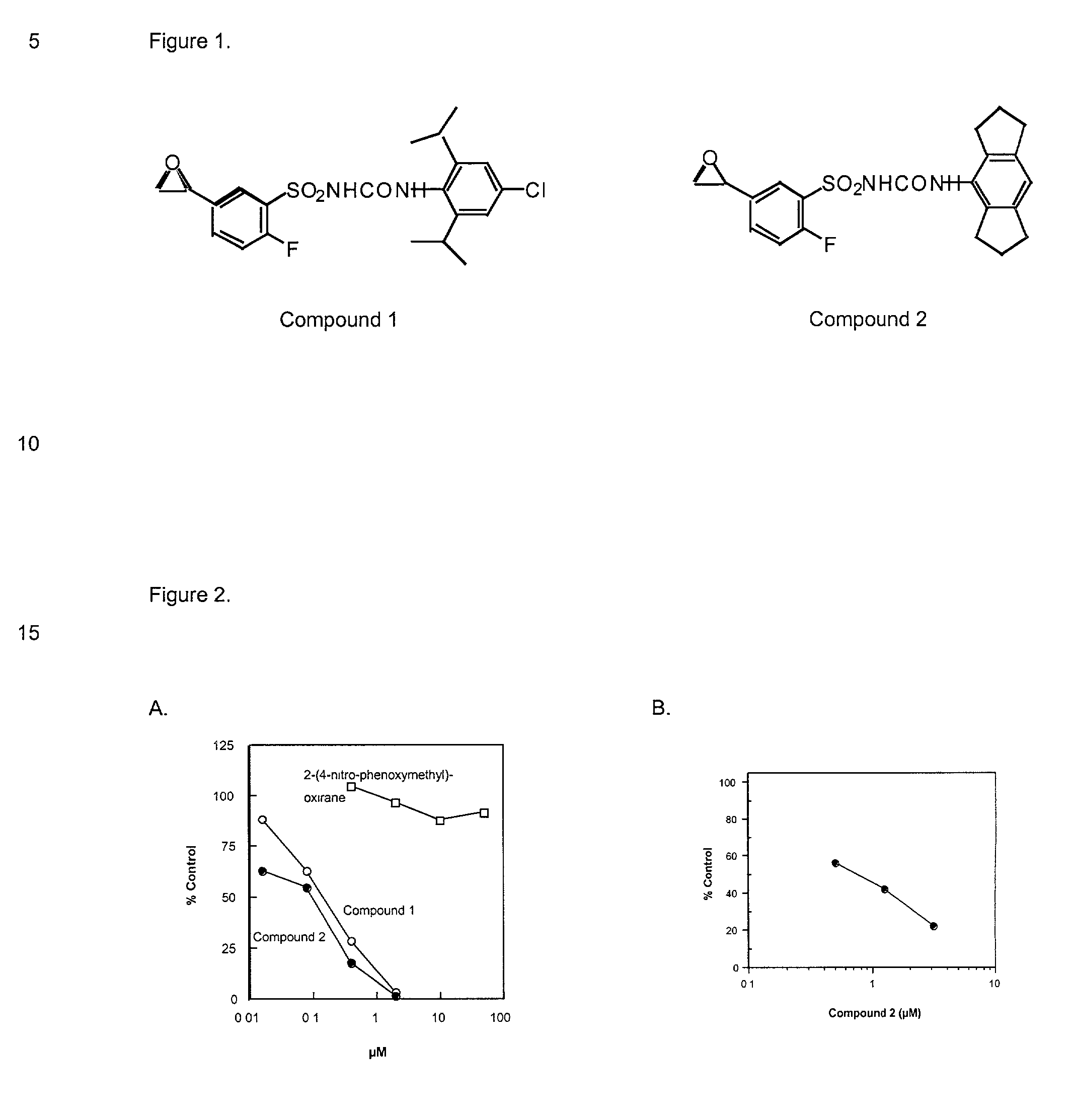Diarylsulfonylurea binding proteins
a technology of diarylsulfonylurea and binding proteins, which is applied in the preparation of peptides, depsipeptides, peptide/protein ingredients, etc., can solve the problem of ineffective release of mature cytokine in the absence of secondary stimulus
- Summary
- Abstract
- Description
- Claims
- Application Information
AI Technical Summary
Problems solved by technology
Method used
Image
Examples
Embodiment Construction
[0038] The procedure by which the DNA and protein sequences corresponding to the DASU binding proteins were identified and the use of agents that bind to these proteins as inhibitors of stimulus-coupled posttranslational processing are described below.
Discovery of DBPs
[0039] Based on their ability to inhibit stimulus-coupled IL-1.beta. posttranslational processing, it was assumed that the DASUs must bind to one or more cellular proteins involved in the cytokine export pathway. To identify these, radiolabeled DASU analogs were synthesized containing an epoxide group that could react with functional groups on proteins to form covalent, irreversible adducts; the structures of two such agents, Compound 1 and Compound 2, are indicated in FIG. 1. Treatment of human monocytes continuously with either of these agents resulted in a dose-dependent inhibition in ATP-induced IL-1.beta. production (FIG. 2A). In contrast, treatment with the structurally distinct epoxide-containing agent 2-(4-nitr...
PUM
| Property | Measurement | Unit |
|---|---|---|
| temperature | aaaaa | aaaaa |
| pH | aaaaa | aaaaa |
| temperature | aaaaa | aaaaa |
Abstract
Description
Claims
Application Information
 Login to View More
Login to View More - R&D
- Intellectual Property
- Life Sciences
- Materials
- Tech Scout
- Unparalleled Data Quality
- Higher Quality Content
- 60% Fewer Hallucinations
Browse by: Latest US Patents, China's latest patents, Technical Efficacy Thesaurus, Application Domain, Technology Topic, Popular Technical Reports.
© 2025 PatSnap. All rights reserved.Legal|Privacy policy|Modern Slavery Act Transparency Statement|Sitemap|About US| Contact US: help@patsnap.com



